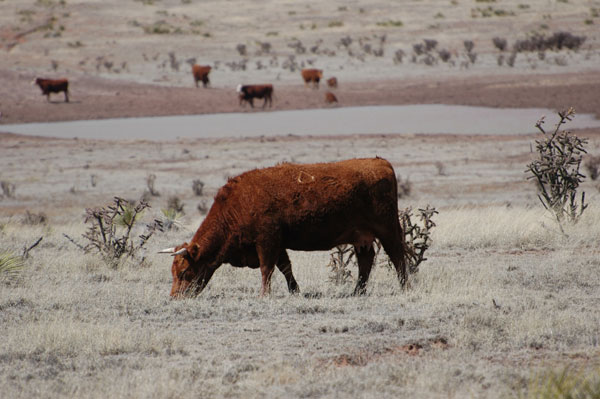Forage planning for the next year
Producers in all drought areas need to inventory current forage and hay reserves and carefully evaluate forage production potential at this time.
April 20, 2021

The latest Drought Monitor shows that drought is significantly worse now than at the same time last year with 63 percent of the country now in D0-D4 categories. These drought categories can be combined into a single numerical measure of drought known as the Drought Severity and Coverage Index (DSCI), published in the Drought Monitor.
The DSCI can range from 0 (zero abnormally dry or drought conditions) to 500 (100 percent D4, Exceptional Drought). The current DSCI for the continental U.S. is 169, compared to 45 one year ago. Coming summer weather raises the odds of further increases in drought. Since the Drought Monitor began in 2000, the U.S. DSCI has only reached a level of 200 for a total of 22 weeks (all in 2012 and early January 2013), with a maximum of value of 215. Drought conditions since last fall are the worst since 2013.
In any specific location, the drought situation right now will set the stage for the next year. In many parts of the country, the next two months may determine much of the forage production for the next 12 months. Regions such as the Southwest and the southern Rocky Mountains have been in drought for many months and face limited forage prospects this year unless moisture arrives very soon. For example, the DSCI in New Mexico is currently 433 and in Colorado is 301. Herd liquidation began in Colorado in 2020 with a 14.5 percent decrease in beef cow inventories last year. Additional herd liquidation in the region is likely imminent. Prevailing La Niña conditions are predicted to fade to ENSO-neutral in the next two months and the southwest region may have improved chances for precipitation this summer with the typical southwest monsoon. However, it is by no means guaranteed and may be too late to avoid drastic actions in the meantime.
In the northern plains, drought has accelerated over the winter leaving the region in critical risk of very limited forage production this year. North Dakota currently has a DSCI of 367, a record level of drought in the state. The DSCI in South Dakota is 227 in the latest report. Simultaneously, Texas has seen similar acceleration of drought and has a current DSCI of 236. These regions may produce little or no forage this year making drastic management actions likely. Herd liquidation is already occurring and may accelerate quickly in these regions.
Oklahoma and other regions in the central plains are in relatively better condition right now. The current DSCI in Oklahoma is 84, in Kansas is 36 and in Nebraska is 92. In Oklahoma, for example, the DSCI of 84 now compares to a value of 7 at the end of March, 2020, indicating that conditions are significantly worse compared to last year. The Oklahoma DSCI has increased from 52 to 84 in just three weeks, which illustrates how quickly drought can develop. These plains regions have moisture to begin early season forage growth but are vulnerable to a limited growing season if dry conditions persist or increase. In fact, the current drought advance in Oklahoma represents the fifth pulse of eastward drought advance in the past year. Fortunately, in each of the four previous occasions, the drought has receded. The current advance is at a very critical time as forage production begins and if it does not recede, may have large implications for the remainder of the year.
Producers in all drought areas need to inventory current forage and hay reserves and carefully evaluate forage production potential at this time. This will provide the basis for a drought action plan that can help guide what and when decisions must be made going forward. What happens the next couple of months may determine the resources available until this time next year.
See Dr. Laura Goodman’s Ranchers Thursday Lunchtime Webinar “Internet-Based Tools Available for Rangeland Management” OSU Extension: Internet-Based Tools Available for Rangeland Management. - YouTube
Source: Oklahoma State University, which is solely responsible for the information provided and is wholly owned by the source. Informa Business Media and all its subsidiaries are not responsible for any of the content contained in this information asset.
You May Also Like


.png?width=300&auto=webp&quality=80&disable=upscale)
